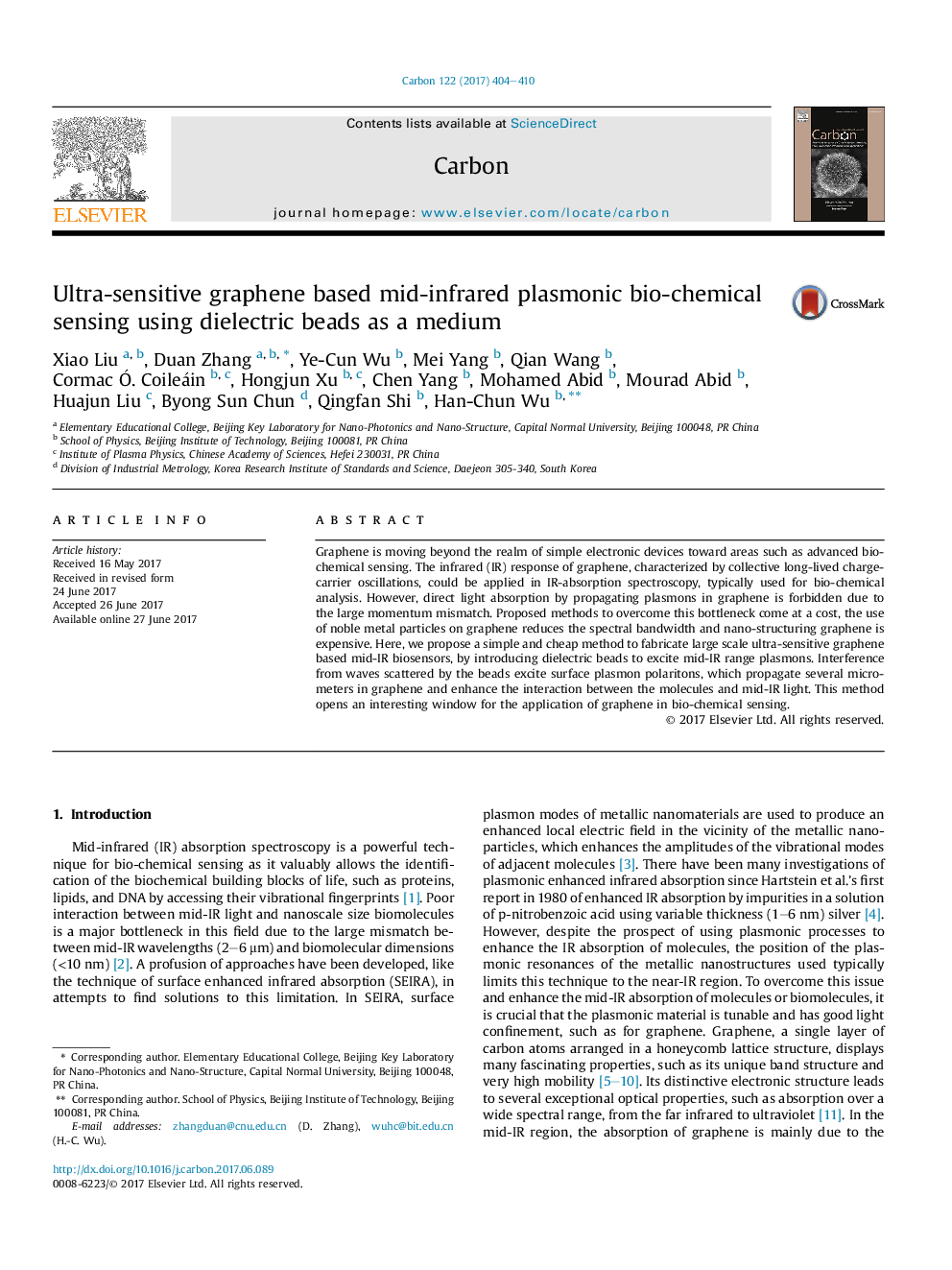| Article ID | Journal | Published Year | Pages | File Type |
|---|---|---|---|---|
| 5431950 | Carbon | 2017 | 7 Pages |
Graphene is moving beyond the realm of simple electronic devices toward areas such as advanced bio-chemical sensing. The infrared (IR) response of graphene, characterized by collective long-lived charge-carrier oscillations, could be applied in IR-absorption spectroscopy, typically used for bio-chemical analysis. However, direct light absorption by propagating plasmons in graphene is forbidden due to the large momentum mismatch. Proposed methods to overcome this bottleneck come at a cost, the use of noble metal particles on graphene reduces the spectral bandwidth and nano-structuring graphene is expensive. Here, we propose a simple and cheap method to fabricate large scale ultra-sensitive graphene based mid-IR biosensors, by introducing dielectric beads to excite mid-IR range plasmons. Interference from waves scattered by the beads excite surface plasmon polaritons, which propagate several micrometers in graphene and enhance the interaction between the molecules and mid-IR light. This method opens an interesting window for the application of graphene in bio-chemical sensing.
Graphical abstractDownload high-res image (298KB)Download full-size image
